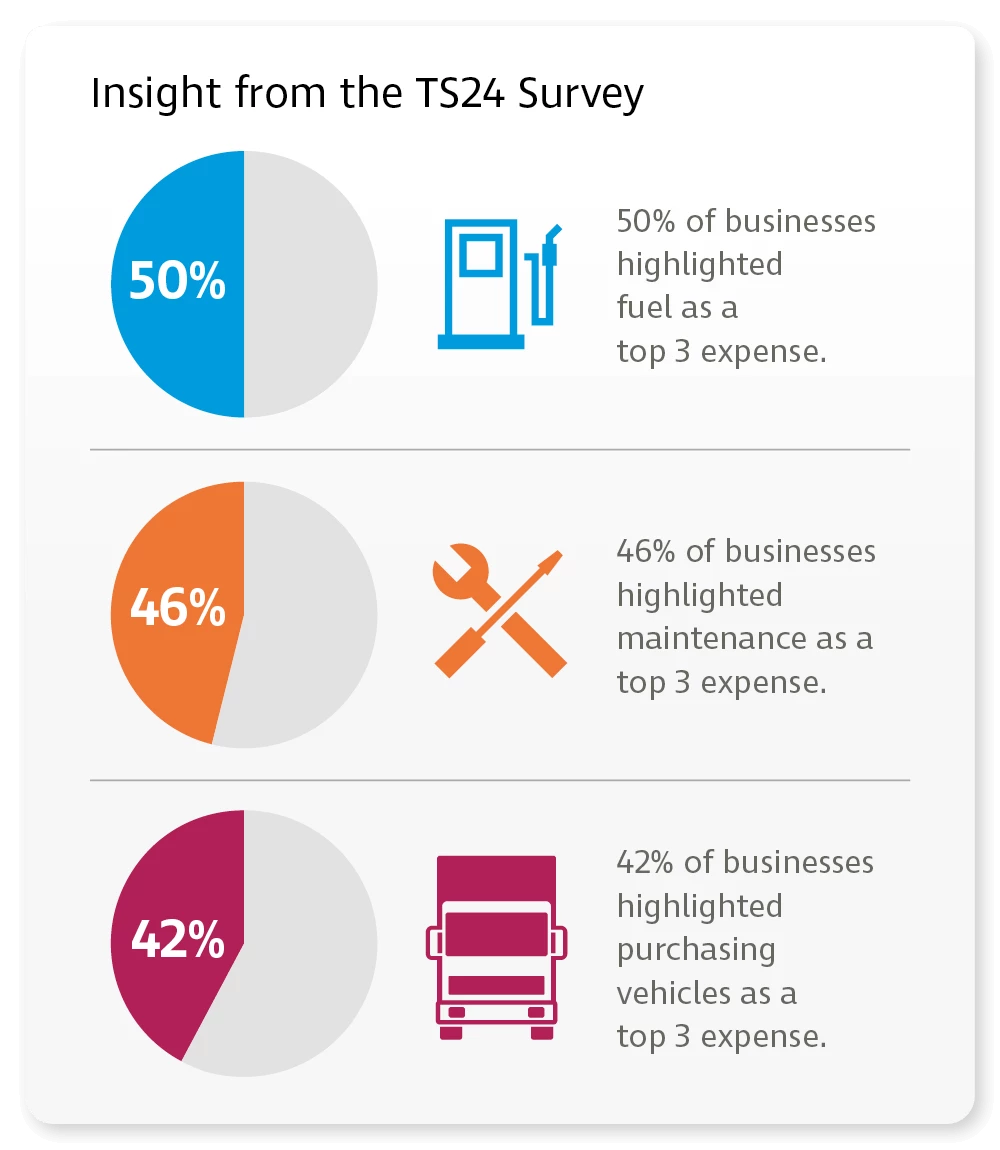by: Hunter Garris (Director of Solutions Engineering)
Key Takeaways
Fleet management can be a complex challenge, and operating without accurate information can leave fleet managers with an incomplete picture of their fleet's efficiency. Businesses often struggle to balance having enough vehicles to meet demand without succumbing to the costly pitfalls of overinvestment in underutilised vehicles.
When determining the optimal number of vehicles for your operations, a process known as right-sizing, telematics plays a vital role. These technologies offer data-driven insights that can guide decision-makers in optimising their fleet size for peak efficiency and revenue generation.
Table of Contents
- Understanding Fleet Utilisation
- Six Tips to Determine Your Ideal Fleet Size
- Taking the Next Steps to Right-Size Your Fleet
Understanding Fleet Utilisation
Efficient fleet management hinges on understanding vehicle utilisation, when, where, and how each vehicle is deployed. By leveraging telematics, businesses gain insights into vehicle idle times, route efficiencies, and usage patterns, which are critical for identifying underutilised vehicles. This data can lead to strategic decisions to reallocate or reduce the fleet, cutting costs and lowering the environmental footprint.
Determining the Right Fleet Size
Utilising telematics data enables fleet operations to accurately assess their asset pool, identifying overages or shortages compared to operational needs. This critical analysis supports strategic decisions on selling surplus vehicles, employing short-term rentals, or adjusting fleet composition to avoid unnecessary expenses.
Telematics can also allow for the recovery of misplaced equipment to avoid unnecessary purchases. This increased oversight helps ensure that fleets are optimally sized for efficiency and cost-effectiveness, even when considering seasonal variations or operational peaks and valleys.
Cost Savings and Efficiency Gains
Right-sizing fleets through telematics can lead to significant cost savings across various areas, including maintenance, fuel consumption, depreciation, and insurance. This strategic approach reduces direct operational costs and mitigates the environmental impact by lowering emissions and optimising fuel usage. Additionally, businesses can avoid the unnecessary expense of underutilised vehicles by ensuring that each vehicle is used to its maximum potential.
Beyond direct cost savings, optimising fleet size enhances overall operational efficiency, with each vehicle contributing to the company's profitability more effectively. This efficiency translates to improved service delivery and an enhanced ability to quickly meet customer needs to strengthen market competitiveness.

Six Tips to Determine Your Ideal Fleet Size
Determining the ideal fleet size is crucial for maximising efficiency and profitability. It involves a blend of insightful data analysis and strategic planning to ensure that every vehicle contributes positively to the organisation's objectives. Here are six essential tips to guide your business in achieving optimal fleet composition.
1. Standardise Reporting
Standardising reporting across mixed fleets helps businesses achieve consistent insights into their fleet operations. Implementing a uniform reporting system enables easier data comparison and analysis across different types of vehicles, facilitating better-informed decisions on fleet sizing. This standardisation is the foundation for accurate performance assessment and strategic planning.
2. Monitor Major Cost Centres
Monitoring all the primary vehicle cost centres will help you better understand your total cost of ownership and operations. These include purchase price, rental rates or lease payment, as well as insurance, fuel, parts, and labour costs. By closely tracking these expenses, businesses can identify opportunities for cost reduction and more effectively manage their fleet's financial performance. Understanding the expense and effectiveness of these cost centres is critical in optimising fleet size and composition.
3. Understand Vehicle Utilisation
Assessing vehicle utilisation helps to directly correlate revenue with asset usage. This analysis helps identify underutilised vehicles, allowing adjustments to improve the fleet's revenue-generating capability. Understanding utilisation rates is vital to ensuring that each fleet vehicle is contributing and that the fleet size aligns with the business needs.
4. Compare Costs to Revenue
Aiming for vehicle costs per mile should help you establish a healthy margin compared to revenue. This comparison is essential for evaluating the financial viability of each vehicle in a fleet. By ensuring that costs are proportionate to the revenue generated, businesses can maintain a profitable operation and make informed decisions about fleet expansion or reduction.
5. Proactively Sell Unused Vehicles
Businesses should proactively sell or auction non-utilised vehicles to establish better fleet efficiency and maximise utilisation. This approach generates immediate capital and reduces maintenance and storage costs associated with idle vehicles. Regularly reviewing utilisation and swiftly selling surplus vehicles can enhance fleet efficiency and financial health.
6. Diversify Revenue Streams
Turning surplus vehicles into rentals could establish new revenue streams to further maximise utilisation and ROI. This strategy can transform underutilised fleet vehicles into profitable ventures, providing an alternative revenue source while retaining the vehicle for potential future needs. Diversifying revenue streams can buffer the business against market fluctuations and enhance financial stability.
Taking the Next Steps to Right-Size Your Fleet
Telematics solutions can provide valuable insights that guide businesses towards more efficient and sustainable operations. This technology allows owners and managers to deep dive into their fleet operation, providing unmatched visibility into fleet utilisation and cost. By leveraging the power of real-time data, companies can achieve a delicate balance between meeting demands and avoiding the costs associated with excess capacity, paving the way for a fleet that's both cost-effective and adaptable to future needs.
To learn more about what fleet management software can do for your business, explore our fleet management resources.

